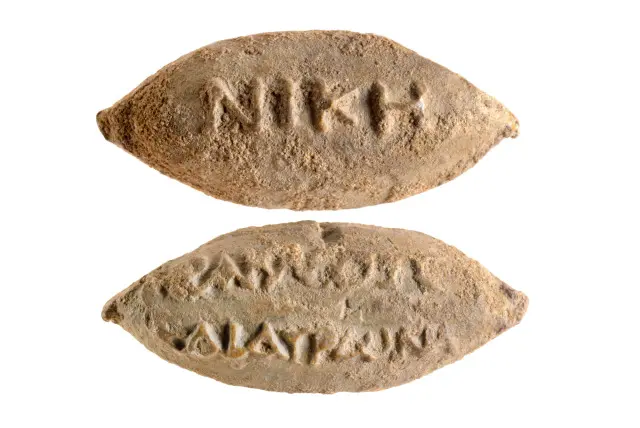The Israel Antiquities Authority announced on Thursday morning that a lead sling bullet had been found in the Israeli city of Yavne. The bullet’s inscription suggests that it may have belonged to a Greek soldier who fought against the Hasmoneans during the Hellenistic Period.
The word “Victory of Heracles and Hauronas” was written on the uncommon projectile and was intended to guarantee victory in combat. According to Professor Yulia Ustinova of Ben Gurion University of the Negev, who interpreted the inscription, the gods Hauron and Heracles were regarded as Yavne’s heavenly patrons throughout the Hellenistic era.
She said that this message was sent to the Greek warrior’s enemies as a threat. “Lead sling bullets are known in the ancient world beginning in the 5th century BCE, but in Israel few individual sling bullets were found with inscriptions. The inscriptions convey a message of unifying the warriors with the aim of raising their spirits, scaring the enemy, or a call intended to magically energize the sling bullet itself.”
According to the reports of The Jerusalem Post, the intention of the inscription was, in fact, to deter the enemy. Pablo Betzer and Dr. Daniel Varga, the supervisors of the excavation for the Israel Antiquities Authority, claim that there is no way to determine whether or not the missile genuinely belonged to a Greek soldier. They claim that there is a possibility that it was utilized during a battle between the Greeks and Hasmoneans.
Here are the statements of the directors: “In the 2nd century BCE, pagan Yavne – which was an ally of the Seleucids (the Greeks who ruled Eretz-Israel), were subject to attacks by the Hasmonean armies. The Hasmoneans sought to subjugate the other nations and create a homogeneous and ‘pure state’ from a religious-ritualistic point of view. The tiny lead sling bullets, announcing the imminent victory of the gods of pagan Yavne, is tangible evidence of a fierce battle that took place in Yavne at that time.”
The bullet is 4.4 centimeters in length and was designed for use in an early sling.
